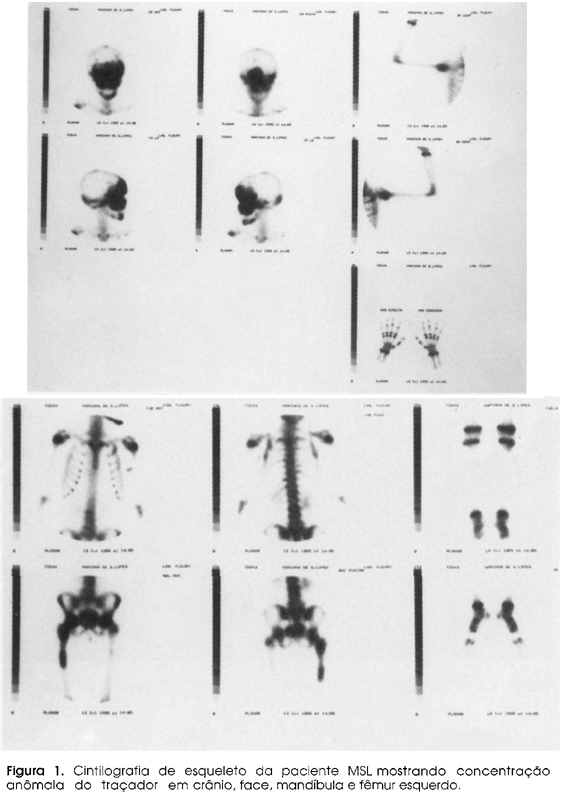McCune Albright syndrome is a rare disorder characterized by polyostotic fibrous dysplasia, café-au-lait spots and some endocrine hyperfunction, mostly precocious puberty. It is caused by activating mutations of the GNAS1 gene that codifies for the Galphas protein, leading to overproduction of cAMP messenger at different tissues. Although pseudo-precocious puberty is the most frequent disfunction, the skeletal lesions are responsible for the highest morbidities such as bone pain, fractures and deformations. Clinical follow up focusing the bone disease is reported in four patients, three of them been treated with intravenous bisphosphonate (Pamidronate, 2mg/kg). Precocious puberty occurred in three and hyperthyroidism developed in two of the patients. Alkaline phosphatase (AP) levels were used as biochemical markers of the osteolytic lesions, clinically presented by local pain, fracture and bone deformities. In addition, lachrymal obstruction in one patient and unilateral blindness in another appear to be due to deformed skull and facial bones. Intravenous infusion of Pamidronate has been improving bone pain and decreased (37% - 54%) basal AP levels. However, a long-term randomized follow-up study determining improvement in bone quality still needs to be completed.
Bone fibrous dysplasia; McCune Albright syndrome; Precocious puberty; Pamidronate







